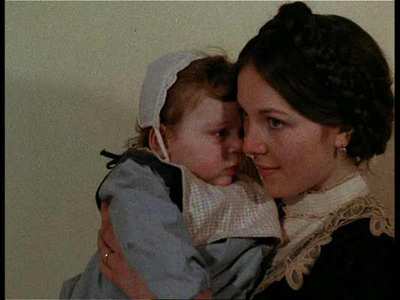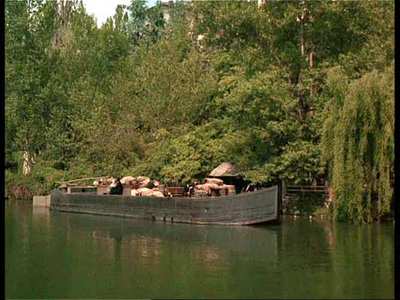Review of Tree of Wooden Clogs, The
Introduction
Written, directed, edited and photographed by Ermanno Olmi, `The Tree of Wooden Clogs` is set in a small farming community in fin de siècle Bergamo, a small commune in Italy. Based on bedtime stories that Olmi`s grandmother told him, `The Tree of Wooden Clogs` takes place over a year and follows the travails of four families who live in abject poverty and are ruthlessly exploited by their landlord.
The title comes from an incident in which one of the farmers cuts down a tree to make some replacement clogs for his son to enable him to walk to school - something for which he pays a terrible price.
Olmi used real peasants from Bergamo who speak Bergamesque throughout the film, although some prints had the dialogue dubbed into Italian by the same actors. Shot vérité-style as a faux documentary, `The Tree of Wooden Clogs` follows in the traditions of Italian neo-realism and, like the Taviani brothers` `Padre Padrone` the year before, it won the Palme D`Or at Cannes in 1978.

Video
An extremely clear fullscreen transfer which, despite some slight graining, has obviously undergone some remastering. The colours are sharp and the contrast is good. The cinematography is superb and after a while you almost forget that you are watching a work of fiction and the film almost passes for edited documentary footage.

Audio
An excellent DD 2.0 stereo soundtrack with no problems in the optional English subtitles.

Features
The only extra feature is an interview with Ermanno Olmi from Italian TV, probably from around 1980 by the look of it. The interview isn`t long and most of it is clips of the film and the interviewer enjoying the sound of his own voice, so Olmi doesn`t get much chance to say anything of substance or interest.

Conclusion
I didn`t enjoy `Padre Padrone`, so didn`t relish the thought of sitting through nearly three hours of another Italian neo-realist film about peasants struggling against grinding poverty. I became even less enamoured by the idea when, early on, a farmer casually lopped the head off a duck and held it upside down for the blood to drain into a bowl.
However, I became fond of the peasants and felt for their plight, despite an extremely uncomfortable and lengthy scene involving the slaughter of a pig. I can`t put my finger on what it was, whether it was the direction, the acting or simply the realism of the piece that I forgave Olmi for making my stomach turn and became thoroughly involved in the families` day to day lives. There was something charming about the way an old farmer grew his tomatoes, involving his granddaughter in the process from planting to selling the produce at market and a couple`s marriage and honeymoon trip to Milan.
As a Marxist, Olmi clearly feels strongly about the struggle of the workers against the greed of the landlords and it is obvious that he is on their side. However, this isn`t a Marxist polemic, but a beautifully made and surprisingly enjoyable film that didn`t feel as long as the given running time.
Your Opinions and Comments
Be the first to post a comment!